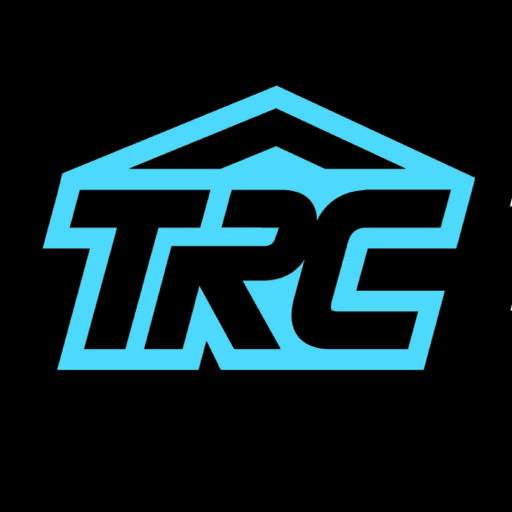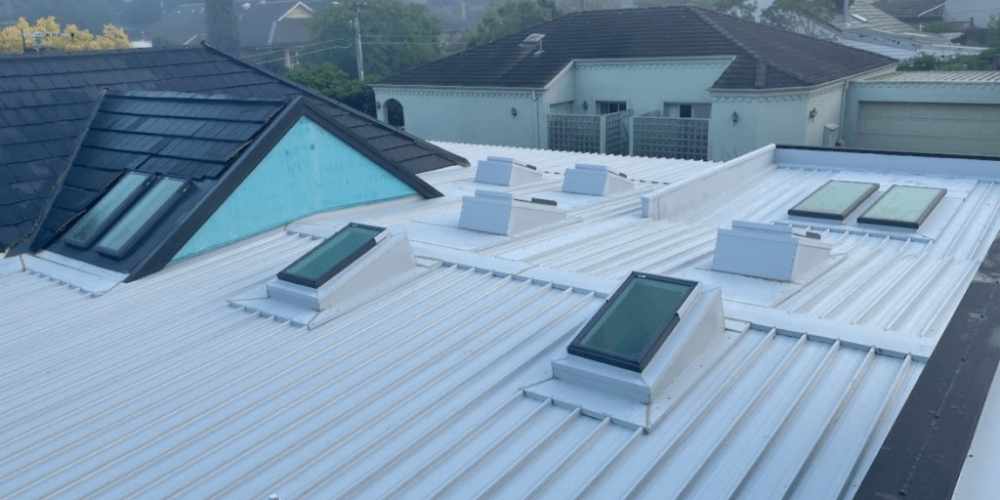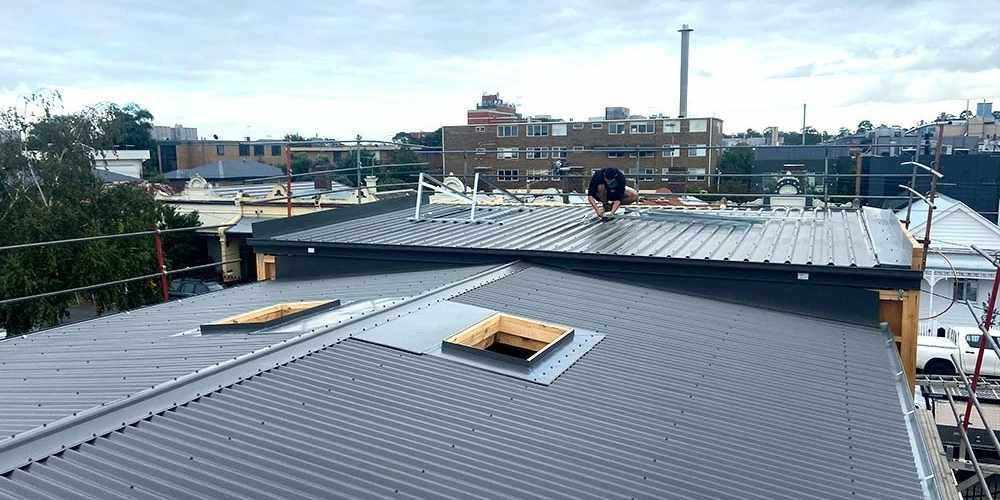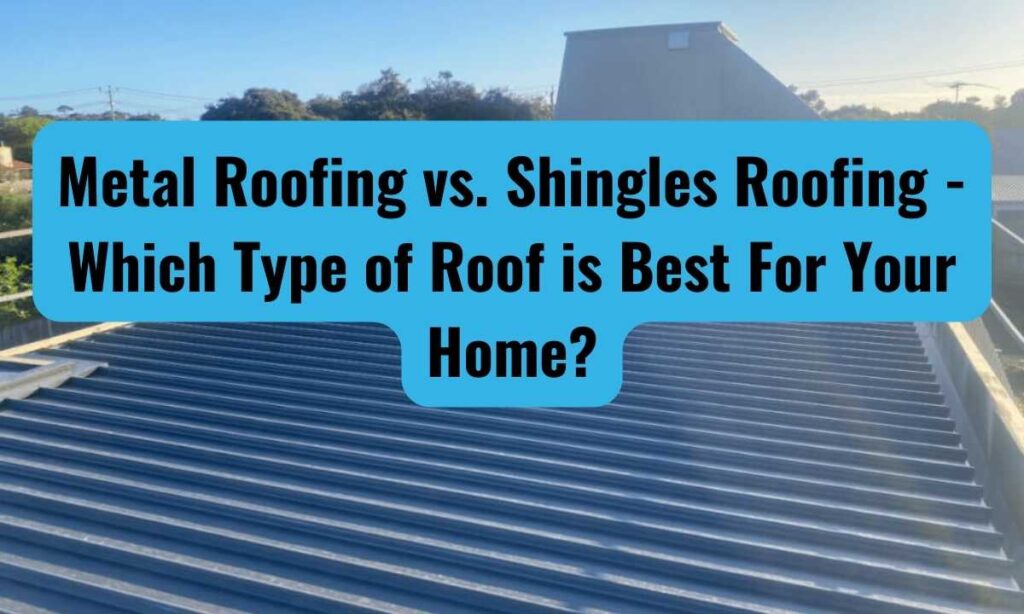Metal Roofing vs Shingles Roofing: Which Type of Roof is Best For Your Home?
The materials used for a project will significantly impact how a home looks, feels, and costs, not just in the short-term costs of construction but also in the longer-term maintenance and energy expenditures. This is true whether constructing a new home or planning to re-roof an existing home.
The appearance of a roof is what people notice first. However, there is a lot more to think about. The first line of defence for your building is its roof; the roofing materials chosen to build it have a significant impact.
Different roofing materials affect the appearance, usability, and durability of your home or commercial facility.
Roofing is most frequently made of metal and shingles. Consider the benefits and drawbacks of each style separately. The choice between a metal roof and a shingle roof now arises. Which material most closely matches your needs?
To help you better understand your roofing alternatives, we’ll look at some of the advantages and disadvantages of metal and shingle roofs in this post.

Lance Mathews
In This Article
What is a Metal Roofing?

A metal roof is a roofing system constructed from metal sheets, tiles, or panels. It serves as the barrier separating a building’s interior from its exterior. It is resistant to air, water, heat, and sound. In addition to providing structural support, the roof substantially contributes to the building’s overall visual appeal.
Metals like aluminium, copper, steel, tin, and zinc make metal roofing. They can be found as tile, slate, or corrugated metal roofs.
Types of Metal Roofing
The following are the most typical styles of metal roofing available today:
- Aluminium Roofs
- Copper Roofs
- Corrugated Metal Roofs
- Metal Tile Roofs
- Slate Metal Roofs
- Metal Roofs with Standing Seams
- Metal Roofs
- Tin Roof
- Metal Zinc Roof
Pros:
- High durability
- Low Maintenance
- In trend (for now)
- Potentially saving energy
Cons:
- Higher installation costs
- Installing is more difficult.
- Greater weight could complicate matters regarding the building’s ability to support it.
What is Shingle Roofing?
A shingle roof is a roofing installation that has shingles covering it. Shingles are rectangular, flat pieces of asphalt, composite, or another type of roofing material laid from the roof’s base and frequently overlap to cover the entire surface.
Roof shingles are a roof covering for pitched roofs that are set in an overlapping way, with each succeeding strip overlapping the next when installed from the bottom edge of the top up. Tile strips are a frequent term for shingle roof tiles.
Common Types of Shingles Roof
A shingle roof is a roofing installation that has shingles covering it. Shingles are rectangular, flat pieces of asphalt, composite, or another type of roofing material laid from the roof’s base and frequently overlap to cover the entire surface.
Roof shingles are a roof covering for pitched roofs that are set in an overlapping way, with each succeeding strip overlapping the next when installed from the bottom edge of the top up. Tile strips are a frequent term for shingle roof tiles.
Asphalt
The most prevalent kind of shingle roof is asphalt. They cost little money, are simple to install, are available in many colours, and last for around 20 years.
Clay
The lifespan of a traditional roof made of clay tiles is the most extended, typically lasting 100 years or more. Due to their fireproof characteristics, these unusual tiles were initially widely used during the Colonial era. Clay tile roofing is now most frequently seen everywhere, where architecture with Spanish and Mediterranean influences is most prevalent.
Metal
Metal is a durable, environmentally friendly, and secure option for your roof. Although they are now often installed in vertical panels, metal shingles can also be installed to mimic clay, slate, or wooden tiles. The materials and colours for metal tile roofing are abundant.
Wood
The thin, tapering pieces of wood make up a wood shingle roof. Although they are not suggested for places prone to fires, they can give a unique decorative aspect to your house. They have an age span of 15 to 30 years, depending on the wood and the environment.
Rubber
Rubber roofing is a cost-effective and environmentally beneficial option available today. Rubber roof shingles can be fashioned to resemble slate, asphalt, or cedar. A rubber shingle roof that has been appropriately put should survive for about 30 years.
Slate
Slate tile roofing constructed and maintained correctly can easily last 100 years. Clay and silt deposited on former sea beds are the sources of the natural stone known as slate. It is still used on numerous federal structures and national sites.
Pros:
- Shingles are cost-effective
- If necessary, replacing a single shingle is simple.
- Architectural shingles are made with a design that allows for various styles and colour combinations.
Cons:
- Asphalt shingles are prone to moss and mildew growth, especially if your house is on a forested site.
- After several years, finding an identical colour match for missing asphalt shingles might be challenging because the shingles gradually fade in the sun.

Metal Roofs vs Shingle Roofs - Which Is Better?
Cost
Shingles are unquestionably inexpensive and straightforward to install. Metal roofs are more expensive, and their installation calls for particular skills.
The average expenses of an asphalt shingle roof is between $8,000 and $9,000, depending on the individual roofing material and where you reside. In contrast, the average cost of a metal roof is between $12,000 and $20,000, at least several thousand dollars more. But remember that metal roofing will need less maintenance and will last almost three times as long.
Appearance
In terms of appearance, asphalt shingles have advanced significantly. They may now be produced to mimic wood shakes, tiles, and even slate-style roofs. They frequently also add depth.
Traditional metal roofing has a distinctive appearance and is available in various solid colours. They can also be produced to resemble other roofing materials, such as asphalt shingles.
Although appearance is relative, both roof systems have a visually appealing appearance. When choosing, keep in mind the other neighbourhoods’ other roofs. You might not want your house to be the only one with a distinctive roof.
Durability
Shingles’ lifespan is usually shortened by continuous temperature cycling. Some of the materials used on shingles roof such as asphalt can absorb water, freeze, and dry, which weakens the material’s structure.
However, metal roofs don’t absorb moisture. They are also designed and installed using fastening clips or slotted screw holes that let the thermal movement of the metal with temperature change without breaking down over time. As a result, metal roofs often last 50 to 70 years in any environment, as opposed to 20 to 25 years for asphalt shingles.
Installation
The installation of metal roofing panels can be challenging to say the least, due to their weight and size. A professional contractor should be consulted and most likely hired for a task like this. Still, any DIYers would be well advised to have an additional set of hands to assist.
Today’s metal roofing systems typically have an interlocking edge system, so paying attention to the small details and carefully reading the project’s instructions before getting started is essential.
Because of the cost and difficulty of installing metal roofing, asphalt shingles outperform more expensive metal roofing options when it comes to installation. Installing shingles couldn’t be simpler, and any builder or roofing professional will be familiar with the process when using this product.
Maintenance
Most asphalt shingle maintenance entails roof penetrations where sealants, metal flashing, and adhesives are applied. These sealants must be changed because they degrade over time. Additionally, rubber pipe boots, which act as flashings for plumbing pipes that enter the roof, are prone to damage and should either be maintained or replaced.
Penetrations are flashed with complementary metal on a metal roof installed correctly. Rubber pipe boots are frequently clad in metal to match a metal roof to preserve the soft rubber from the sun’s damaging rays and for aesthetic reasons. That significantly increases its life of it.
Eco-friendliness
They can both be recycled. When built of aluminium, which has a high scrap value, metal roofs are frequently. However, separating and recycling asphalt shingles is far more expensive yet not widely used. Sadly, 11 million tons of asphalt shingles are dumped in landfills yearly.
In contrast to asphalt shingles, metal roofs frequently contain some recycled materials. A further problem is one of durability.
Energy Savings
People often think that metal roofs are warm. The reverse is true. Due to its high level of reflectivity, metal will absorb less heat, keeping the roof more relaxed than most other roof types.
How to Choose the Right Type of Roof For Your Home
More types and roofing designs are available than ever, ranging from those made of manufactured materials like asphalt, sheet metal, and plastic polymers to those made of natural materials like slate and wood.
Although each has pros and cons, they can all bring a unique design touch to your home. But which one is best for you, then?
When choosing a roof, there are several things to keep in mind, such as:
- How long is it going to last?
- Does it endure severe weather, such as hurricanes or wildfires?
- Is it too hefty for the roof’s existing supports?
- Is the slope of the roof sufficient?
- Will the aesthetic fit in with the house’s design?
- Are the products recyclable and environmentally friendly?
- Are the local construction codes in agreement with the type of roofing?
- And lastly, what does it cost?

